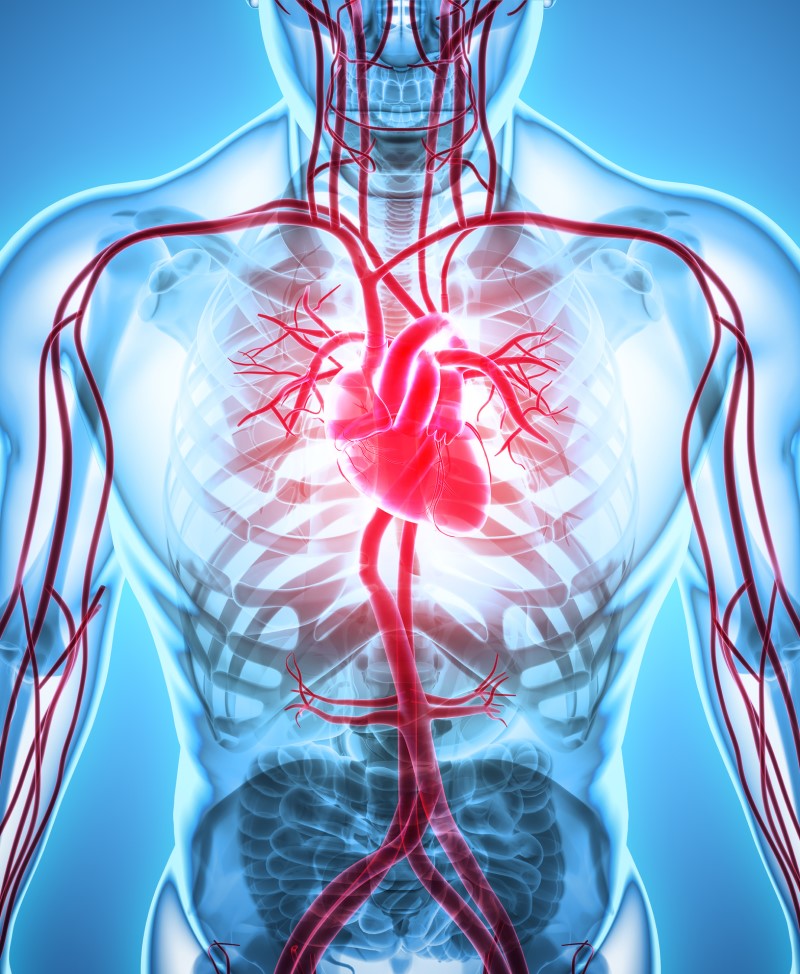Heart failure: definition and causes

Heart failure: a condition in which the heart is unable to pump blood to the body and supply organs or tissues with oxygen and nutrients.
Most common symptoms
- Malaise
- Chest pain
- Spirituality
- Nausea
- Head spinning
- Constipation
- Blue leather
- Flatulence - bloating
- Sweating
- Bloating - flatulence
- Indigestion
- Low blood pressure
- Lung Island
- Swelling of the limbs
- Disorders of consciousness
- Cold extremities
- Dry cough
- Muscle weakness
- Pressure on the chest
- Fatigue
- Anxiety
- Coughing up blood
- Yellowish skin
- Confusion
- Accelerated heart rate
- Liver enlargement
Characteristics
Heart failure is a situation that leads to insufficient blood pumping to the body, tissues, organs.
For some reason, cardiac function is insufficient and does not meet the body's current need for oxygen and essential nutrients.
FAQs:What is this disease and why does the heart fail?At what percentage does it work and what is the norm?What is left-handed failure and what is right-handed failure?Answers to these questions and other interesting information in the article.
Cardiac insufficiency is not the cessation of the heart's activity, but implies a reduction in performance relative to the human body's momentary need.
In 2015, heart failure affected about 40 million people globally. Overall, around 2% of adults have heart failure and in those over the age of 65, this increases to 6–10%. Above 75 years old, rates are greater than 10%.
It affects the elderly, especially those over 65 years of age, with no significant gender difference at this age. It is reported to be the most common cause of hospitalisation in this period of life.
The prevalence of heart failure is approximately 20 to 30% in people aged 70 to 80 years.
It affects approximately 1% of the population.
It is a common cause of morbidity and death in developed countries.
The increase in prevalence is also due to an increase in the average age of life.
Plus, other diseases of the cardiovascular system are also present, such as high blood pressure, a previous heart attack or coronary artery disease.
According to the European Society of Cardiology, the prevalence is approximately:
- 1% of people over 65 years of age
- 7% of people over 75 years of age
- and 15% aged 85+
Heart failure also occurs in younger people over the age of 40, contributed to by high blood pressure or heart attack.
The heart is a muscular pump whose job is to pump blood into the bloodstream and therefore throughout the body. The brain is most sensitive to the blood supply, but also the heart muscle itself.
A healthy heart is able to adapt to the body's demand for increased blood supply to the body. It increases the so-called cardiac output, which is the amount of blood expelled in one minute.
This occurs mainly with increased physical exertion.
The heart can increase its activity up to 5 times for a certain period of time.
The cardiac output at rest is approximately 5 litres - under load it can be up to 20 litres.
Its value depends on the age, sex, but also the fitness of a person. Approximately 13% of the resting volume maintains the blood supply to the brain.
Table: difference between an inactive and active person
| Inactive person | Active person |
| systolic volume at rest in millilitres of blood | |
| 60 - 80 | 100 |
| Maximum | |
| 150 | 200 |
| cardiac o utput | |
| 5 litres | 5 litres |
| Maximum | |
| 20 - 25 litres | 35 - 40 litres |
Table note: Trained people, athletes normally have a lower pulse rate at rest.

We know the different types of heart failure
Heart failure is mainly divided by timing.
Thus, it can be either acute or chronic. The temporal data is important and significant especially in terms of differences in treatment.
Acute arises suddenly on the basis of another new disease, such as a heart attack, but also when blood pressure is too high - hypertensive crisis. It can also be caused by decompensation, i.e. worsening of an already ongoing chronic heart failure.
The chronic form, on the other hand, has a course persisting for a longer period of time.
Deterioration of health can be caused, for example, by excessive - inadequate physical, but also psychological stress, violation and non-compliance with the treatment regimen, due to other pre-existing diseases, as well as the sudden onset of high blood pressure.
Examples of other classifications of heart failure:
- acute, with a sudden onset
- chronic, persisting for a long time
- left-sided - failure of left ventricular function of the heart
- right-sided - failure of right ventricular function
- bilateral - if the function of both ventricles fails, most of the time both ventricles of the heart fail in the subsequent period
- systolic dysfunction - when the ventricle of the heart is not capable of sufficient systole, i.e. contraction and expulsion of sufficient blood into the bloodstream
- can lead to dilatation of the heart, i.e. enlargement of the heart muscle
- diastolic dysfunction - occurs when the muscle of the heart is unable to sufficiently diastole, i.e. relax and fill with enough blood
- mainly in cardiac hypertrophy, i.e. enlargement of the heart
Learn more: Heart enlargement.
NYHA classification - which stands for New York Heart Association:
- NYHA I - the person does not experience discomfort even with physical exertion, however, the results of the examination are not within the norm
- NYHA II - difficulties occur with increased physical exertion
- NYHA III - restriction of activities already with little exertion, difficulties subside at rest
- NYHA IV - rest discomfort when any physical activity is excluded
The so-called Killip classification for acute heart failure due to myocardial infarction is also given:
- Killip I - no signs of heart failure
- Killip II - wheezes audible on examination above the base of the lung (base of the lung)
- Killip III - cardiac pulmonary oedema
- Killip IV - cardiogenic shock

Question: How long does heart failure last?
Answer:
Depending on whether it is acute or chronic.
Acute heart failure
The acute, i.e. sudden, form develops rapidly, within minutes, hours, sometimes days.
It is characterized by a rapid course when severe symptoms occur. The organism does not have sufficient time to adapt and compensate. Shortness of breath is the most severe (other complaints are listed in the section on symptoms).
This condition threatens a person's life.
Immediate professional intervention is required for this type. Very important at this moment is the total physical, but also psychological calm of the affected person.
What does it mean?
- the person is sitting or in a semi-sitting position
- not allowed to walk
- should not talk either
- because of shortness of breath, he may not even be able to speak
- it is equally important to maintain a calm atmosphere around the sufferer
- call for help, i.e. the emergency medical service
- we cooperate with the emergency line operator
- we answer all questions calmly
- we do not stall
112 is the European emergency number you can dial free of charge from fixed and mobile phones everywhere in the EU. It will get you straight through to the emergency services – police, ambulance, fire brigade. National emergency numbers are still in use too, alongside 112. But 112 is the only number you can use to access the emergency services in all EU countries.
The acute form is defined as a sudden onset of impaired cardiac function that leads to inadequate blood pumping.
Blood accumulates in the lungs or in the body, and consequently organs, such as the brain or the heart, are insufficiently supplied with blood and therefore with oxygen and other nutrients.
Congestive heart failure:
Accumulation of blood - stasis or stagnation...
Another medical term is congestion.
Which is Latin - the accumulation of blood in the organs.
It arises from another disease of the cardiovascular system, i.e. coronary heart disease, high blood pressure or heart attack. Another mechanism of occurrence may be an acute exacerbation of pre-existing chronic heart failure.
However, the cause can also be non-cardiac, i.e. outside the heart and cardiovascular system.
Chronic heart failure
Its course is long-lasting, lasting months or even years.
The human body has the ability, and in this case sufficient time, to compensate, i.e. adapt, to a state of insufficient heart function. This type is more common and arises mainly from ischaemic heart disease or after a heart attack.
The heart gradually loses its ability to pump blood sufficiently, becomes exhausted and weakens.
It tries to make up for the reduced blood volume by increased work, i.e. by increasing the heart rate. An accelerated pulse is present. This again causes the heart muscle to weaken.
Meanwhile, mortality from heart failure is higher compared to some cancers. It has been reported that up to half of those with chronic heart failure die within 4 years. Older age, associated diabetes or other heart problems contribute to this.
Failure of left heart function
Left-sided heart failure or left ventricular failure - the problem is in the pumping of blood from the lungs, through the left heart and into the body's bloodstream.
Blood accumulates in the lungs.
Blood stasis in the lungs can take on a state when the pressure of the blood exceeds the ability of the pulmonary vessels to retain fluid, which is manifested by flooding of the alveoli with fluid.
Pulmonary oedema, or swelling of the lungs, occurs.
The latter is a consequence of shortness of breath.
With a professional examination, the presence of fluid in the lungs is heard - wheezing, gurgling of water.
They are referred to as ancillary sound phenomena in breathing.
The milder form is manifested by difficulty on exertion. It is then that rest is important, after which the problems may ease.
At a later stage, shortness of breath occurs even with mild exertion, walking a short distance or lying flat. The sufferer indicates that he cannot lie down. The sufferer sleeps in a semi-sitting position. At night, lying down is associated with dyspnoea at rest.
The severe form can take a dramatic and rapid course. Significant shortness of breath and choking of the affected person is present.
Difficulties then come on suddenly, and the presence of water in the lungs can be heard even at a distance.
Sound phenomena do not need to be examined with a phonendoscope, but they can be heard distantly - at a distance - the gurgling of fluid from the lungs when breathing.
Over time, the right ventricle is also overloaded and bilateral heart failure occurs.
This is due to stasis of blood in the blood vessels of the lungs, which also increases the pressure in the right side of the heart.
heart.
Right-sided heart failure
Failure of the right heart function results in the accumulation of blood at the heart and therefore in the body. Swelling of the lower limbs is the first to be seen in the chronic course. At first, the accumulating fluid manifests itself as swelling of the ankles, later progressing higher up the shins.
In cardiac disorders, swelling is present on both lower extremities and to the same extent. Swelling of only one lower limb indicates a problem in the veins, such as inflammation or varicose veins.
Learn more: Swelling of the limbs.
In a more severe case, there is also swelling of the abdomen - ascites, and the whole body - the swelling is referred to as anasarca. Increased blood pressure in the portal circulation is manifested by enlargement of the liver.
In acute right heart failure, swelling to this extent does not take time to develop. It is manifested by shortness of breath.
Causes
Why does it occur?
The causes are manifold. They can originate in the heart, blood vessels or heart valves. There are also extra-cardiac causes, so-called non-cardiac.
The most common causes are ischaemic heart disease (IHD) (70%) and conditions after heart muscle infarction. Cardiomyopathy and also valvular defects represent 10% each.
Examples include inconsistent patient-doctor cooperation, under- or missed treatment. Similarly, too high fluid intake in people with a weak heart.
Table: some causes of heart failure
| Main category | Details |
| Chronic heart failure |
|
| Coronary syndrome |
|
| Hypertension |
|
| Heart rhythm disorders |
|
| Heart valve malfunctions |
|
| Haemodynamic cause |
|
| Myocarditis |
|
| Cardiomyopathy |
|
| Extrakardiálne príčiny |
Listed below are causes outside the heart or aggravating factors that cause heart failure
|
| High expenditure syndrome |
|
Heart failure also has an impact on the whole body. The blood supply to the organs deteriorates. Of course, it is the brain that is most sensitive to blood flow, but also the heart muscle itself. They need a continuous supply of oxygen and nutrients to function properly.
Where we can expect the impact of heart failure:
- CNS - brain, impaired function, intellect, memory and other
- kidney - retention - water retention in the body
- swelling worsens
- liver - hepatomegaly, or enlargement
- muscle fatigue
- heart rhythm disturbances, especially atrial fibrillation, tachycardia
- increased risk of embolization (stroke, heart attack)
- swelling of the lower limbs, ascites, anasarca
- pulmonary oedema
- hydrothorax, water in the chest cavity
- shortness of breath
Symptoms
How does heart failure manifest itself?
Symptoms occurring in heart failure lead to a form of heart failure. General symptoms such as muscle weakness, fatigue or inefficiency are also present.
Shortness of breath
Or even dyspnoea, as it is professionally referred to, occurs first on exertion.
As indicated by the NYHA classification above, at first it may only be present with heavier exertion, later it also occurs with moderate exertion, when walking or after walking a few metres. It limits the quality of life. In the most severe cases, dyspnoea at rest is present.
Position and breathing...
People with coronary artery disease and chronic heart failure know that they have to lie in an elevated position up or semi-sitting. They put more pillows under their back and head at night.
A warning signal is the total restriction of the semi-sitting position and forcing into a sitting - orthopneic position.
Orthopnea is a severe breathing disorder where the sufferer is forced into a change of position, unable to lie down.
At a minimum, the patient must be sitting or standing. He or she often supports himself or herself with his or her hands, for example, on a table.
Often shortness of breath along with orthopnea occurs at night or in the morning. Therefore, in cardiac patients, i.e. people being treated for heart disease, it is this type of breathlessness that is alarming. Specialist examination and treatment is needed.
Swelling - oedema
Swellings are present with a difference whether it is a failure of the right or left part of the heart. There is also a difference in whether it is an acute or chronic form.
A symptom of left-sided heart failure is if swelling manifests itself on the lungs, along with shortness of breath. In the case of acute right heart failure, the swelling does not have time to develop. Shortness of breath is the first to set in.
Left side of the heart and swelling
In left-sided failure, there is stasis of blood in the lungs. If the blood pressure exerted by the right ventricle of the heart exceeds a certain limit, the fluid from the blood permeates into the alveoli of the lungs.
In this case, it depends on the severity.
A mild form of swelling occurs gradually - over a long period of time. The doctor uses auscultation (listening) during examination with a phonendoscope - bubbling, gurgling sounds. First in the lower parts of the lungs, that is, at the bases of the lungs.
Due to heart failure, the term Asthma cardiale is also used: it is a paroxysmal cough, i.e. frequent and violent coughing that can make it hard for a person to breathe, especially at night.
In a severe and acute course, severe pulmonary edema may occur, which progresses rapidly. Bubbling of water from the lungs may be present at a distance - distant hoarseness.
The person has a cough or coughs up pink - blood-tinged frothy mucus.
A man's life is threatened. Without prompt and expert treatment, he dies of left-sided heart failure.
Right side of the heart and edema
In right-sided heart failure, water is retained throughout the body, in front of the heart and in front of the lungs.
Initially, the person gains weight.
Later, the ankles fill with water. Later on, the swelling continues to the shins. It is important to note that both lower limbs are swollen equally.
With swelling of only one leg, it is necessary to think of another cause.
If it progresses, the abdomen also swells, the liver enlarges, abdominal pain and pain in the right flank are present. The upper limbs and the whole body may also swell - then we speak of anasarca.
Other symptoms
The body tries to compensate for the impaired blood supply to vital organs (brain and heart). This is a consequence of a decrease in blood supply to other parts of the body.
The first to feel it are the kidneys and their reduced function, which worsens water retention in the body.
Muscle weakness is the cause of reduced blood supply to the muscles. Fatigue, inefficiency, but also general weakness sets in.
A heart rhythm disturbance is associated, which is manifested, for example, by heart palpitations (pounding heart). The presence of atrial fibrillation or other arrhythmia is a risk of developing an embolus - a blood clot. This is expelled into the body by the heart, often by this mechanism a stroke is caused.
In addition to shortness of breath, a person at night may be awakened by frequent night urination - nycturia.
Also associated with shortness of breath is a blue discolouration of the skin - cyanosis. It is most pronounced on the fingers and lips.
The manifestation of severity are symptoms such as:
- restlessness
- fear of death
- chest pain, when a heart attack or pulmonary embolism is in progress
- cold sweat
- skin pallor
- dry cough
- later mentioned coughing up pink foam
- fatigue
- confusion
- increased filling of the jugular veins
- low blood pressure
- tachycardia, i.e. a rapid pulse
Other difficulties that may occur:
- dizziness
- collapse
- cold limbs
- intellectual impairment due to reduced blood supply to the brain
- reduced urination - oliguria
- for water retention in the abdominal cavity
- loss of appetite
- nausea
- constipation
- bloating
- yellowish skin, for impaired liver function

Diagnostics
Diagnosis is mainly based on medical history and physical examination.
This includes, for example, the familiar and important listening to breathing with a phonendoscope. In the case of heart failure, the presence of sounds while breathing using auscultation (listening) - various bubbling sounds are evaluated. Subsequently, also the heart activity, as well as its regularity.
Tapping is also important, which can determine the presence of fluid in the chest cavity. On visual inspection, an increased filling of the jugular veins is also visible. Palpation (touch) allows to inspect the enlargement of the liver is evaluated, but also the quality and regularity of the pulse.
Blood pressure, pulse or blood oxygen saturation, i.e. oxygen saturation of haemoglobin, is measured. The norm is above 97%. In pulmonary oedema, it falls well below 90%.
Important imaging methods include echo, or echocardiography.
Left ventricular ejection fraction values of the left ventricle of the heart:
It also determines the ejection fraction of the heart.
More than 50% is considered normal.
Mild dysfunction is at values from 50 to 40%.
At 30-40% it is a moderate dysfunction.
Severe dysfunction is at less than 30%.
You may have heard:
It is also said then that the heart is working at 40 or 30 percent.
Next, a chest X-ray is taken to assess the size of the heart, as well as the presence of an effusion in the lungs or pleural cavity. Alternatively, a renal and abdominal sonogram may be completed.
In the case of chronic failure, daily weight control is important. This shows the degree of fluid retention in the body.
Laboratory blood tests include, for example, a blood count, liver function tests and a mineralogram. Plus other blood parameters are also examined.
Typically, increased levels of the natriuretic peptide BNP, or troponin, are found in heart failure.
ECG - electrocardiography
In heart failure, there may be no pathological findings on the ECG. However, the situation changes if chest pain is present.
It is then necessary to determine whether it is angina pectoris in acute heart attack with heart failure, or pulmonary embolism, when the right ventricle of the heart may fail.
An ECG will also reveal rhythm disturbances, such as atrial fibrillation, when anticoagulation therapy is important.
For example, CT and CMR (cardiac magnetic resonance) are also complementary. These examinations are important to get a picture of the condition of the heart or blood vessels.
Differential diagnosis
This part is to take care of differentiating difficulties that may indicate other diseases and difficulties.
Examples include:
- arrhythmia
- mitral valve stenosis
- pulmonary embolism
- pneumothorax - that is, air in the pleural cavity
- fluidothorax - fluid in the pleural cavity
- lung disease, COPD, fibrosis, asthma, pneumonia
- metabolic diseases, uraemia, ketoacidosis
- anaemia
- psychiatric disorders, anxiety, panic neurosis, hyperventilation
Course
The course of the disease depends on its form. Chronic heart failure is characterised by a prolonged course, lasting from months to years. It is complicated by acute deterioration and heart failure.
A person with this disease is repeatedly, even several times a year, hospitalized in the internal medicine or cardiology department. Hospital treatment is inevitable in acute deterioration.
In the beginning, fatigue, muscle weakness is typical. Body weight increases, due to fluid retention in the body. Later, filling of ankles and shins on both limbs with water appears.
After pressing on the skin of the ankles or shins with a finger, pits remain, which only slowly merge with the surface of the skin.
Abdominal swelling is accompanied by abdominal pain, enlargement of the liver by palpable tenderness in the right lower abdomen. The abdomen is distended, the patient loses appetite. At a later stage, ascites manifests itself. A serious manifestation is swelling of the whole body.
Breathing becomes worse especially with exertion. Walking up stairs is a problem. Consequently, the shortening of the length of the metres walked marks the worsening of the chronic form.

Positioning is key for heart failure patients.
Sleep is possible only in a semi-sitting position, later only in a full sitting position with the lower limbs lowered. At this point, professional treatment is recommended, waiting for the condition to improve is a risk.
At night, in addition to choking and asthma, frequent urination occurs, which is professionally referred to as nycturia.
High blood pressure is often a clue to worsening heart failure. Conversely, low blood pressure indicates reduced heart function. At that point, the heart's activity is already rising, as a compensatory mechanism.
The acute form of heart failure is characterized by rapid progression.
It is not uncommon for a deterioration in health to occur within minutes.
Mainly shortness of breath is present, sometimes coughing up pink foam.
Dyspnea at rest, choking, rapid breathing, inability to speak and move, fear for life, pallor, low blood pressure, rapid pulse, cold sweat, blue skin (cyanosis) of lips, fingers, nose, to marbled skin flaccidity = cardiogenic shock.
Learn more: Shock andCardiogenic shock.
The latter indicates the most severe form of heart failure. The prognosis is very poor.
How is the condition treated? Read the next segment to find out.
How it is treated: Heart failure
Treatment of heart failure: important medications and lifestyle measures
Show moreAbout cardiac failure in the video
Heart failure is treated by
Heart failure is examined by
Other names
Interesting resources










